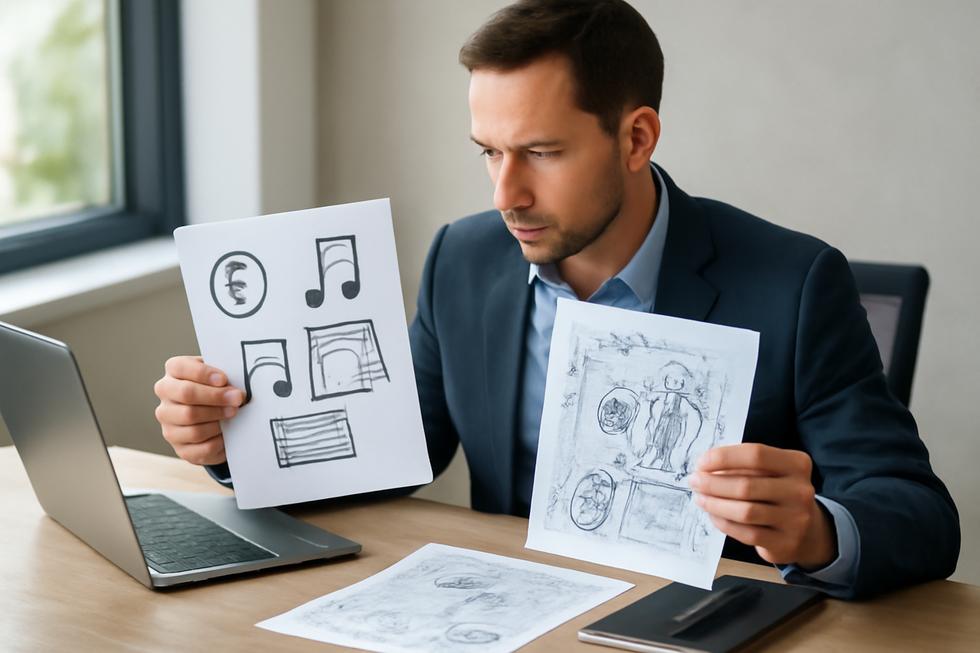Introduction
Intellectual property protection is essential for business owners looking to secure their competitive edge and maximize the value of their creations and innovations. Navigating the distinctions between copyright and patent protections can be complex but is critical for making informed decisions that shield your assets effectively. This comprehensive exploration delves into the core differences between copyright and patent, focusing first on their purpose and scope to highlight how these protections serve different needs. We then examine their duration and acquisition processes to clarify practical considerations business owners face. Following that, the article explains enforcement mechanisms, putting into perspective how violations are addressed legally. Emphasizing the boundary between expression of ideas and functional innovation further deepens your understanding of what can be protected. Economic and cost factors reveal strategic insights about investment in protection. Lastly, the interplay of technological and creative elements underscores the unique roles of each form of protection in today’s business environment. Together, these chapters provide a holistic framework to help you confidently protect your intellectual property.
Tables of Contents
Chapter 1: Purpose and Scope in Copyright Versus Patent Protection
- Foundations of Purpose and Scope: How Legal and Technological Principles Shape Copyright and Patent Protection
- Balancing Innovation Incentives and Public Access: Economic and Societal Effects of Copyright and Patent Scopes
Chapter 2: Duration and Acquisition Differences in Copyright Versus Patent
- How Duration Differences Shape Innovation, Economics, and Cultural Access in Copyright and Patent Law
- Navigating Acquisition Complexities: Formality, Costs, and Worldwide Variations in Copyright and Patent
Chapter 3: Legal Enforcement Mechanisms in Copyright Versus Patent
- Navigating Institutional Pathways and Procedures in Copyright and Patent Enforcement
- Balancing Innovation and Access: Economic and Societal Impacts of Copyright and Patent Enforcement
Chapter 4: Expression of Ideas Versus Functional Innovation in Copyright Versus Patent
- Navigating the Technological and Legal Boundaries Between Creative Expression and Functional Innovation
- Economic and Societal Impact of Protecting Creative Expression and Technological Innovation
Chapter 5: Economic and Cost Implications of Copyright Versus Patent
- Balancing Cost Efficiency and Accessibility: Economic Realities in Copyright and Patent Protection
- Balancing Innovation Incentives: Economic Outcomes and Strategic Deployment of Copyright and Patent Protections
Chapter 6: Technological and Creative Aspects in Copyright Versus Patent
- Navigating Technological Innovation: How Copyright and Patents Protect Functionality and Expression
- Protecting Creative Expression: How Copyright Secures Artistic Works Beyond Patent Reach
Chapter 1: Purpose and Scope in Copyright Versus Patent Protection
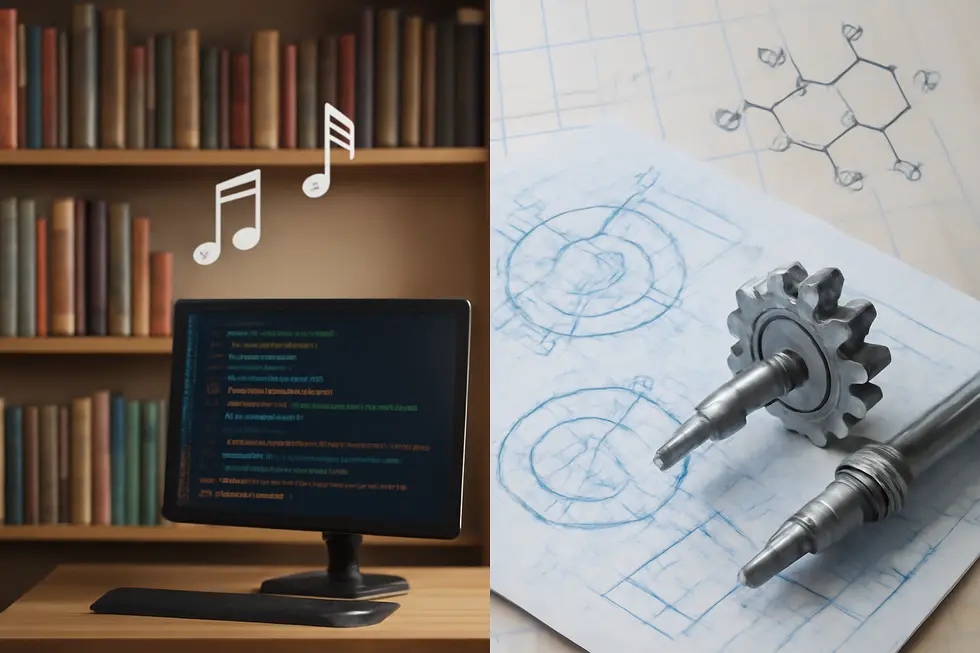
1. Foundations of Purpose and Scope: How Legal and Technological Principles Shape Copyright and Patent Protection
The purpose and scope of copyright and patent protections are rooted in fundamentally different legal and technological principles that reflect their distinct roles in intellectual property law. Copyright aims to safeguard the original expression of creative ideas fixed in a tangible medium. This includes literary works, music, art, and software code as an expressive form. It does not, however, protect the underlying ideas, concepts, or functional methods embedded within those works. Instead, its purpose centers on encouraging cultural and artistic creativity by granting creators exclusive rights to reproduce, distribute, and publicly display their works for extended periods—typically the life of the author plus 70 years. Copyright protection arises automatically upon the fixation of the work and does not require formal registration, streamlining the process and lowering the barrier for creators.
In contrast, patent law focuses on inventions and technological innovations that are novel, useful, and non-obvious. Patents protect functional aspects—devices, machines, chemical compounds, processes, and even certain software-related methods—rewarding genuine advancements in technology. This temporary monopoly, lasting up to 20 years from the application filing date, incentivizes inventors to disclose detailed information about their innovations, promoting public knowledge and further development. Unlike copyright, obtaining a patent is a rigorous, time-consuming, and often expensive process, necessitating demonstration of the invention’s novelty, utility, and non-obviousness.
Technologically, copyright does not depend on novelty or invention; it protects the form of expression regardless of the medium used. Patent protection, however, is intrinsically tied to advancing the state of technology. Its scope restricts protection to technical and functional innovations to avoid monopolizing abstract ideas or discoveries. This distinction ensures that copyright nurtures creativity across cultural and artistic realms, while patents fuel scientific and technological progress.
The nuanced differences between these protections become especially salient in areas like software, where copyright covers source code as creative expression, whereas patents may protect underlying algorithms or methods when they meet stringent criteria. Understanding these foundational contrasts clarifies how copyright and patent laws complement one another in fostering innovation and creativity.
For further reading on copyright’s role in protecting creative works, refer to copyright information for books.
Source: https://trademark2go.com/
2. Balancing Innovation Incentives and Public Access: Economic and Societal Effects of Copyright and Patent Scopes
The divergent purposes and scopes of copyright and patent protections produce unique economic and societal impacts that shape innovation and creativity. Copyright safeguards the expression of ideas—such as literary works, music, and software code—and grants creators exclusive rights to reproduce and distribute their creations for an extensive period, typically lasting the author’s lifetime plus several decades. This broad and automatic protection fosters a vibrant cultural landscape by encouraging widespread creative output and ensuring ongoing economic benefits for authors and their heirs without restricting others from independently developing similar underlying ideas.
Conversely, patents protect functional inventions—novel and non-obvious technological advances like machines, processes, or chemical compounds—through a formal, rigorous application process. Patents grant inventors exclusive commercial rights for a limited duration, usually 20 years, providing strong incentives to invest in costly research and development. This exclusivity is crucial in sectors with high innovation costs, such as pharmaceuticals and electronics, as it helps inventors recover expenses and attract investment. However, the monopoly power granted can also lead to higher prices and restricted access, especially for essential technologies, posing a challenge to public welfare.
Societally, copyright sustains cultural diversity and the free flow of creative content by protecting creators’ moral and economic rights without inhibiting the use of underlying ideas. It encourages sharing and expanding creative expression while maintaining a balanced public interest. Patent protection, by contrast, plays a complex role: it promotes technological progress and disclosure of new knowledge but may limit the accessibility of innovations due to exclusivity and pricing barriers.
Together, copyright and patent systems form complementary frameworks that balance the need to incentivize both artistic creativity and technological advancement, while grappling with the tension between proprietary rights and societal access to knowledge. Understanding these economic and social implications clarifies why each form of protection serves different but equally vital roles in fostering growth and innovation.
For more insights on how copyright shapes economic dynamics in business, see copyright-definition-economics-business.
Chapter 2: Duration and Acquisition Differences in Copyright Versus Patent
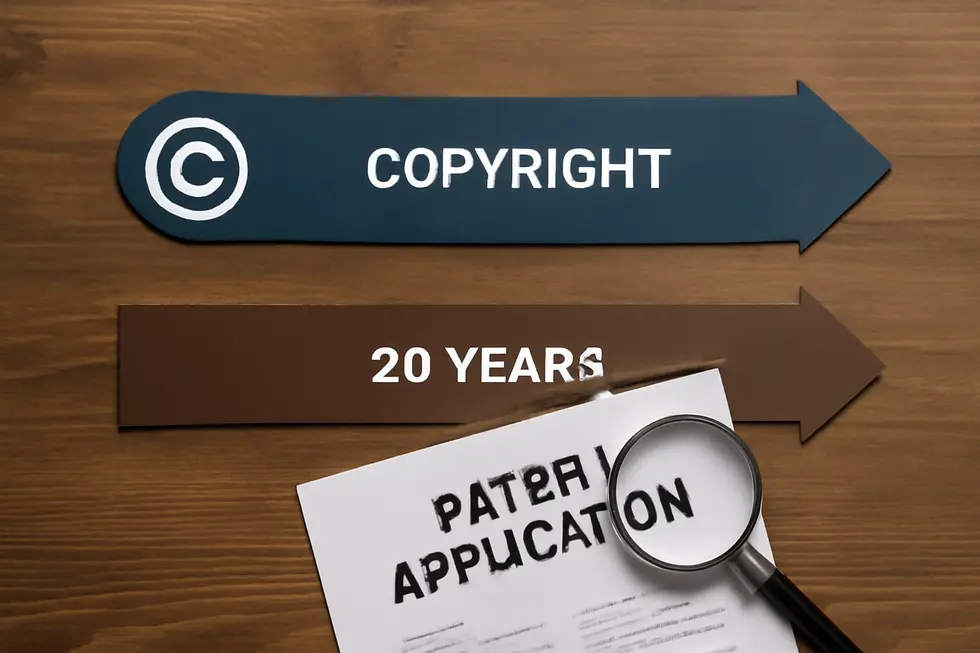
1. How Duration Differences Shape Innovation, Economics, and Cultural Access in Copyright and Patent Law
The duration disparities between copyright and patent protections significantly influence their roles in fostering innovation, economic growth, and societal access. Patents typically grant inventors exclusive rights for around 20 years from the filing date, creating a limited monopoly that encourages investment in costly and uncertain research and development. This time-limited exclusivity is especially vital in industries like biotechnology and electronics, where breakthroughs require substantial upfront costs. By providing this incentive, patents help to stimulate technological advancement and open new markets, creating a dynamic economic environment. However, the relatively short patent term also ensures that, once expired, inventions enter the public domain, enabling broader access and additional innovation.
Copyright protection, in contrast, often lasts for the life of the author plus 70 years or more, reflecting the different nature of creative works. This extended duration supports the cultural and economic interests of authors and their heirs, ensuring a long-term incentive for creative expression. Since copyright protection applies automatically upon fixation without the need for registration or maintenance fees, it offers a streamlined protective mechanism for artistic and literary creations. Yet, this lengthy duration can delay when these works become freely accessible to the public, influencing cultural dissemination and licensing dynamics.
The differing term lengths lead to varied strategic and legal considerations. Patent holders must actively manage maintenance fees and plan their R&D pipelines around the fixed 20-year horizon, balancing exclusivity with eventual public release. Copyright owners navigate a more complex landscape involving licensing agreements and inheritance rules over many decades. Together, these duration frameworks demonstrate how intellectual property regimes tailor protections to the distinct characteristics of technological inventions and creative works, balancing private incentives with public benefits. More on the economic and legal dimensions of copyright can be explored in this comprehensive copyright overview.
For detailed insights on patent durations and their implications, see the extensive analysis at PatentPC and related IP resources.
2. Navigating Acquisition Complexities: Formality, Costs, and Worldwide Variations in Copyright and Patent
Navigating Acquisition Complexities: Formality, Costs, and Worldwide Variations in Copyright and Patent
Acquiring protection for intellectual property is a pivotal step that notably diverges between copyright and patent systems due to differing formality, costs, and global frameworks. Copyright protection emerges automatically the moment an original work is created and fixed in a tangible form. This automatic acquisition means creators do not have to complete formal registration processes, although voluntary registration remains a strategic choice to bolster enforcement capabilities. Ownership changes are managed largely through contractual agreements, without necessitating governmental approval or lengthy examinations.
In stark contrast, patent acquisition demands a rigorous, formalized process. Applicants must submit detailed applications demonstrating novelty, utility, and non-obviousness criteria to a patent office. This procedure involves administrative scrutiny, possible amendments, and, frequently, extensive correspondence before approval. Beyond the initial grant, securing patent rights globally is complex; for instance, a granted European patent converts into national patents across multiple countries, each requiring separate validation and maintenance fees, introducing considerable logistical and financial burdens.
Cost disparities reflect these procedural differences. Copyright incurs minimal expenses, mainly optional registration fees and contract drafting costs, making it accessible for most creators. Patent procurement, however, often entails substantial investments. From filing, examination fees, professional legal assistance, to translation and validation in numerous jurisdictions, costs can escalate to hundreds of thousands of dollars over the patent’s lifespan.
Internationally, copyright enjoys widespread harmonization through treaties like the Berne Convention, which mandates automatic protection without formalities across member states. Patent protection is more fragmented; the Patent Cooperation Treaty facilitates multi-country filings but does not standardize examination processes or maintenance requirements.
Additional patent acquisition complexities include rigorous due diligence to confirm ownership and validity before transactions, as well as considerations related to licensing commitments and antitrust regulations. These factors amplify the intricacy and strategic nature of patent acquisition compared to copyright.
This pronounced divergence highlights how copyright offers a streamlined, cost-efficient route to protection, whereas patents require navigating formal, multi-layered systems with significant financial and procedural demands. For a deeper understanding of patent acquisition processes and cross-border challenges, see the comprehensive overview at DrugPatentWatch.
For broader aspects of copyright transfer and enforcement, exploring copyright distribution rights in business can provide valuable context.
Chapter 3: Legal Enforcement Mechanisms in Copyright Versus Patent
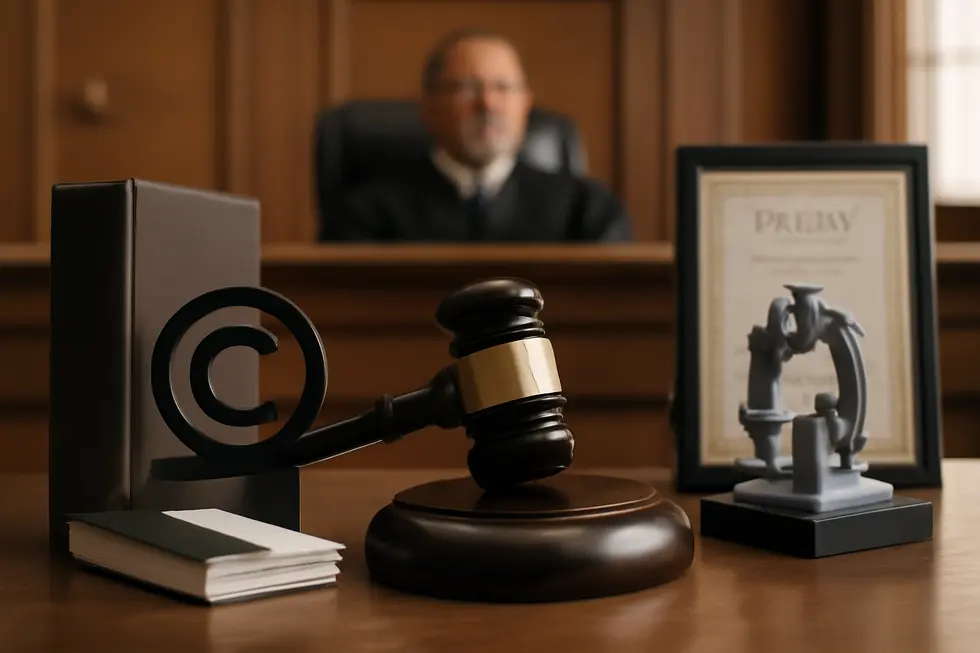
1. Navigating Institutional Pathways and Procedures in Copyright and Patent Enforcement
The enforcement of intellectual property rights in copyright and patent law stems from fundamentally different procedural and institutional frameworks shaped by the nature of the rights and the scope of protection. Patent enforcement is characteristically formal and complex, predominately conducted in specialized judicial forums. In jurisdictions like the United States, patent disputes proceed through federal courts, with appeals handled by the Court of Appeals for the Federal Circuit, while administrative bodies such as the U.S. International Trade Commission offer additional remedies by blocking infringing imports. European patent enforcement remains largely national, requiring separate litigation in each country, although the forthcoming Unified Patent Court aims to harmonize proceedings and reduce duplication across member states. Japan utilizes both district courts and an Intellectual Property High Court, complemented by administrative invalidation procedures at the Japan Patent Office. These judicial pathways involve detailed stages—from pleadings and discovery to trial and appeal—often demanding significant financial and technical resources. Emerging alternative dispute resolution like arbitration faces restrictions due to the non-arbitrability of patent validity, highlighting the challenges patent owners face in cross-border enforcement.
Conversely, copyright enforcement embraces a more varied institutional approach. While civil courts handle infringement actions, enforcement relies heavily on administrative or quasi-judicial mechanisms, especially prominent in the digital arena where AI-driven content recognition systems enable rapid identification and takedown of unauthorized works. Digital platforms implement streamlined dispute resolution, reducing reliance on protracted litigation. Remedies focus on injunctions and statutory damages, with procedural models that are often more flexible than patent cases. This flexibility reflects the automatic nature of copyright protection and the broader, expressive scope it governs.
Together, these differences illustrate a landscape where patent enforcement demands formal, resource-intensive judicial engagement with procedural rigor, while copyright enforcement benefits from adaptive approaches combining courts with modern technology-driven administrative tools. Recognizing these distinct institutional pathways is crucial for rights holders navigating enforcement strategies tailored to their intellectual property type.
For further insights into copyright frameworks, see copyright law basics and protections.
Source: European/Japanese patent law overview
2. Balancing Innovation and Access: Economic and Societal Impacts of Copyright and Patent Enforcement
Legal enforcement mechanisms in copyright and patent law deeply influence economic growth and societal welfare by shaping how innovation and creativity are incentivized and accessed. Patents create exclusive rights that encourage investment in costly research, especially in fields like biotechnology and pharmaceuticals, by allowing inventors to recover development expenses through market exclusivity lasting up to 20 years. This exclusivity fuels technological progress, job creation, and market expansion. However, strict patent enforcement can lead to higher consumer prices and limited availability of essential products, prompting policy interventions such as compulsory licensing to safeguard public health without undermining innovation incentives.
Conversely, copyright enforcement protects the economic interests of creators in literary, artistic, musical, and software works by preventing unauthorized copying and distribution. It underpins large cultural industries by securing revenue streams essential for sustaining creativity. Modern copyright enforcement increasingly employs AI-driven content recognition tools to detect infringement swiftly, maintaining a balance between rights protection and efficient policing. Yet this digital enforcement raises concerns regarding privacy, accuracy, and the evolving definitions of creative expression in the age of emerging technologies.
From a societal standpoint, patent enforcement promotes technological breakthroughs crucial for long-term economic development but must reconcile exclusivity with broad access, especially when dealing with vital medicines or technologies. Similarly, copyright enforcement safeguards cultural heritage and knowledge dissemination but must carefully navigate fair use exceptions and equitable access to avoid stifling cultural exchange.
Both systems rely on specialized legal and administrative frameworks for dispute resolution, with patent enforcement often involving complex, costly litigation and sometimes arbitration, while copyright enforcement leverages scalable digital mechanisms tailored for vast, globalized creative markets.
This nuanced interplay of enforcement reveals distinct yet complementary roles: patent law drives innovation through temporally limited monopolies critical for high-risk invention, whereas copyright law fosters cultural vibrancy by protecting expressions and enabling creators to benefit economically. Together, they reflect a dynamic equilibrium balancing exclusivity, competition, innovation, and societal benefit.
For businesses seeking to understand the nuances of protecting creative works, further information can be found at copyright information example for business.
For deeper analysis on balancing patent law and public health, the following resource provides valuable insight: https://trademark2go.com/copyright-language-business-owners/.
Chapter 4: Expression of Ideas Versus Functional Innovation in Copyright Versus Patent
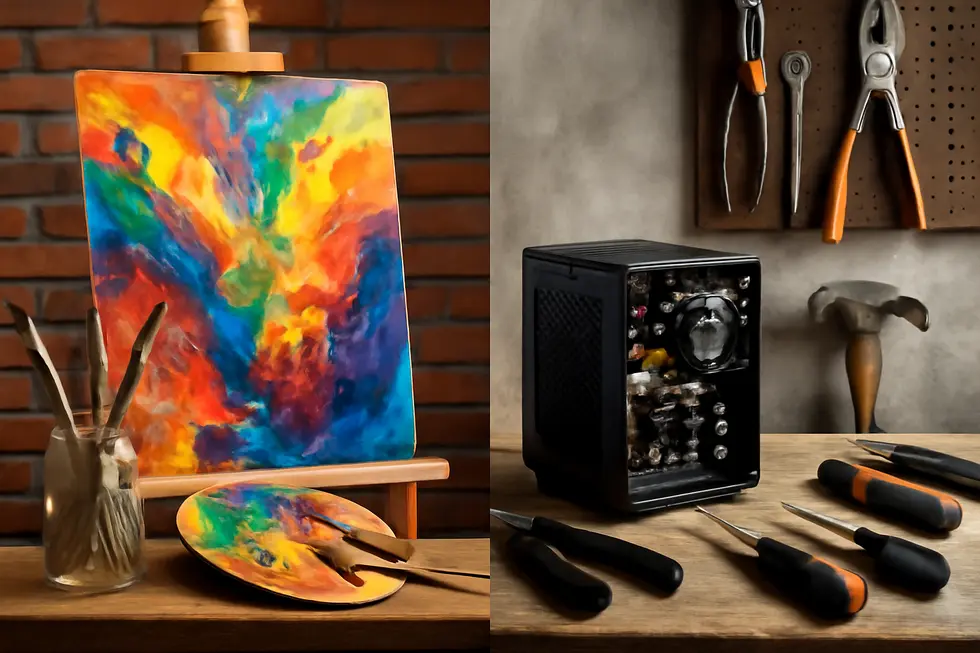
1. Navigating the Technological and Legal Boundaries Between Creative Expression and Functional Innovation
Understanding the core technological and legal distinctions between copyright and patent protections is essential to grasp their unique roles in intellectual property law. Copyright safeguards the specific expression of ideas rather than the ideas themselves. For example, the written form of software source code enjoys copyright protection, preventing unauthorized copying of that code’s exact wording. However, the underlying algorithms or functions the code performs can be independently developed and implemented by others without infringement, highlighting the boundary copyright maintains between expression and idea.
Conversely, patents address functional innovations — tangible inventions, processes, or methods that introduce novel and useful technical solutions. This protection extends beyond mere expression to cover the practical mechanisms or functionalities of an invention. For instance, a patented software feature that accomplishes a particular process or method prevents others from using the same functional innovation, even if they write completely different code achieving the same result.
Legally, copyright protection is automatic upon creating an original work fixed in a tangible medium, lasting generally for the author’s lifetime plus 70 years. Its enforcement focuses strictly on stopping the unauthorized copying or distribution of the protected expression. Independent creation of the same idea or function is lawful and does not constitute infringement.
In contrast, obtaining patent protection requires a rigorous application demonstrating novelty, utility, and non-obviousness. Once granted, patents provide exclusive rights for roughly 20 years, allowing holders to exclude others from making, using, or selling their invention regardless of independent development. Patent infringement centers on whether the accused product or process embodies the patented functional elements.
This nuanced separation allows copyright to encourage the free flow of ideas by protecting only creative expression while enabling others to innovate independently. Simultaneously, patent law fosters technological advancement by granting innovators exclusive rights over new functional inventions that push progress forward.
For a deeper dive into copyright protections and how they relate to expressive works, see this resource on copyright information for books.
External resource: UpCounsel on copyright vs patent
2. Economic and Societal Impact of Protecting Creative Expression and Technological Innovation
Economic and Societal Impact of Protecting Creative Expression and Technological Innovation
The contrasting nature of copyright and patent protections shapes their economic and societal contributions in distinct but complementary ways. Copyright safeguards the expression of ideas—literary, artistic, musical, and software code works—thereby fueling creative industries that generate significant cultural and economic value. By granting creators exclusive reproduction and distribution rights, copyright incentivizes the production of diverse cultural content that stimulates employment and economic growth. However, challenges like piracy diminish these benefits, sometimes discouraging creators from investing further in new works. Registration, although optional, remains crucial to securing enforceable rights that maintain economic strength.
In contrast, patents protect functional innovations, fostering technological progress by granting inventors exclusive rights to commercialize their inventions for a limited period. This exclusivity drives substantial investments in research and development, accelerating advances that improve quality of life and economic productivity. Patent systems also encourage knowledge dissemination through licensing, which can enhance market valuations and support the formation of innovation ecosystems. Yet, an overly restrictive patent regime may hinder follow-on innovation by raising costs or entrenching dominant firms, thereby affecting market competition and accessibility.
Societally, copyright nurtures cultural diversity and the open exchange of ideas, but faces mounting pressure in the digital age for reforms that accommodate new realities such as AI-generated content and widespread online sharing. Meanwhile, patents play a vital role in transforming inventions into commercial products and services, yet require ongoing balancing to prevent monopolistic barriers that could stifle industry-wide innovation.
Additionally, design patents offer a strategic, cost-effective measure to protect aesthetic aspects of products, complementing utility patents that focus on function. Together, copyright and patent protections drive economic growth by encouraging both creative expression and technological breakthroughs, each demanding nuanced approaches to maximize their societal benefits.
For further insight on the economic role of copyright in industries, see copyright definition economics business. External research on the economic impact of patents highlights their critical role in innovation ecosystems: https://patentlicensingresearch.org/
Chapter 5: Economic and Cost Implications of Copyright Versus Patent

1. Balancing Cost Efficiency and Accessibility: Economic Realities in Copyright and Patent Protection
The economic cost and accessibility of copyright and patent protection reveal fundamentally different implications due to the distinct nature of these intellectual property rights. Copyright protection is notably cost-effective and straightforward. Creators benefit from automatic protection the moment their work is fixed in a tangible form, with registration fees remaining modest and formalities minimal. This accessibility allows individual artists, authors, and small businesses to secure their rights with relative ease. However, while obtaining copyright is inexpensive, enforcement—particularly in the digital era—can become costly and challenging due to widespread unauthorized copying and distribution, thus potentially diminishing economic returns.
In contrast, securing a patent, especially a utility patent, demands a significant financial and time investment. The application process can span several years, requiring detailed documentation, legal expertise, and rigorous examination. These demands present a high entry barrier to smaller firms and independent inventors, limiting accessibility. Although design patents offer a somewhat quicker and more affordable alternative, they still involve non-trivial costs and strategic decision-making. On the upside, patents grant robust enforcement rights, preventing others from making, using, or selling the patented invention, which incentivizes significant investment in research and development.
From an accessibility perspective, copyright protects the unique expression of ideas—not the ideas themselves—allowing others the freedom to independently develop similar works without infringement. This fosters a broad creative ecosystem but may restrict public use or derivative creativity if rights holders enforce their claims aggressively. Patents, meanwhile, afford exclusive control over the actual invention or method, effectively restricting access to the protected innovation. This exclusivity, while rewarding innovators, can also limit availability and affordability, particularly in critical sectors like pharmaceuticals. To address these concerns, legal tools such as compulsory licensing enable limited public access under defined conditions, balancing inventors’ rights with societal needs.
Ultimately, copyright presents a low-cost, broadly accessible framework with softer protection over ideas, while patents entail considerable economic investment and stronger protection that can limit access. Understanding these economic and accessibility trade-offs is essential, especially in fields where innovation intersects with public interest. For creators seeking more on how copyright influences business and innovation, see this detailed copyright definition and economics guide.
2. Balancing Innovation Incentives: Economic Outcomes and Strategic Deployment of Copyright and Patent Protections
Balancing Innovation Incentives: Economic Outcomes and Strategic Deployment of Copyright and Patent Protections
Both patents and copyrights function as cornerstones in driving innovation, yet their economic roles and strategic applications diverge markedly. Patents primarily stimulate technological progress by granting inventors exclusive rights to exploit their valuable inventions for a finite period, commonly twenty years. This exclusivity creates a temporary monopoly that incentivizes substantial investments in research and development, particularly vital in sectors with high upfront costs and risks, such as pharmaceuticals and advanced electronics. By protecting inventions from immediate imitation, patents enable inventors and firms to recoup expenses and secure financial returns, fostering job creation and economic growth through commercialization and technology diffusion.
Conversely, copyrights incentivize creativity in artistic, literary, and software works by protecting their expression rather than the underlying ideas. This protection encourages the continuous production and dissemination of cultural content, supporting vibrant creative industries including publishing, music, and film. While copyrights do not demand novelty, they grant creators control over reproduction and distribution, enabling monetization through licensing and sales. This generates significant economic value by enriching cultural diversity and supporting related business ecosystems.
Strategically, patents are vital tools for entities pursuing competitive advantage in technology-driven markets. They underpin financing options for startups and small enterprises by securing proprietary innovations that can attract investment. Patents also trigger accelerated commercialization of inventions, contributing to broader technological advancement. Copyrights serve as protective mechanisms essential for sustaining the economic viability of creative endeavors. They help maintain the integrity and commercial value of artistic works while encouraging continuous cultural innovation.
In essence, patents and copyrights complement one another by addressing different facets of innovation. Patents propel economic growth through fostering technological breakthroughs backed by rigorous development, whereas copyrights nurture economic and cultural vitality by safeguarding original expression. This balanced ecosystem supports diverse innovation pathways, tailoring protections to the unique nature of technological inventions and creative works alike.
For further insights on the influence of patent law on innovation, see this detailed exploration: https://patentpc.com/blog/the-impact-of-patent-law-on-innovation-and-technology
Chapter 6: Technological and Creative Aspects in Copyright Versus Patent
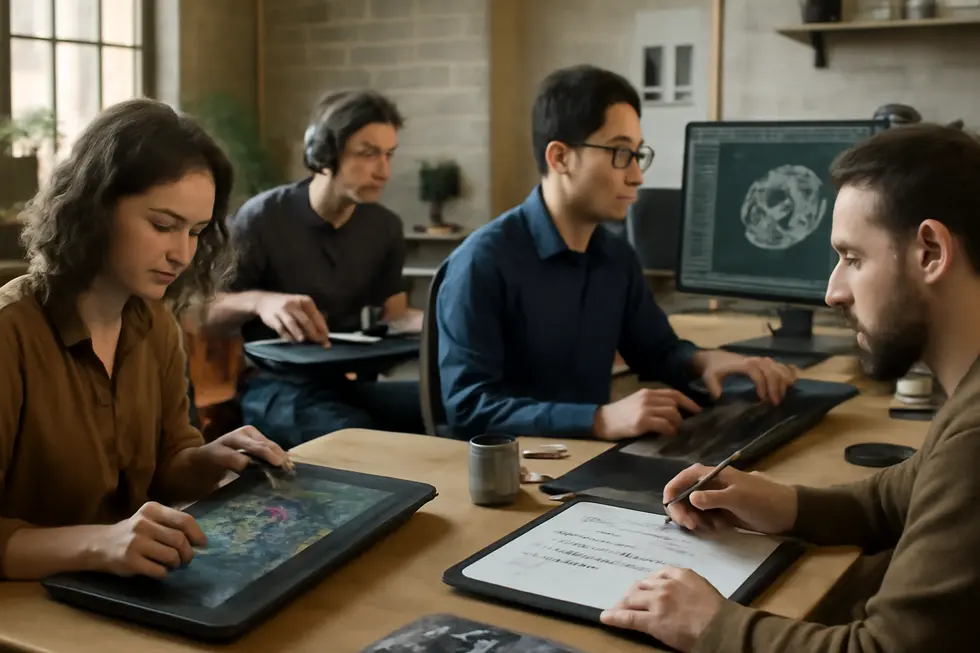
1. Navigating Technological Innovation: How Copyright and Patents Protect Functionality and Expression
Navigating Technological Innovation: How Copyright and Patents Protect Functionality and Expression
The distinction between copyright and patent protection is pivotal when addressing technological innovation, particularly concerning software and inventions. Copyright safeguards the creative expression of technological works—this includes source code, user interfaces, and related documentation—offering automatic protection upon creation without a formal registration requirement. Crucially, however, copyright does not extend to the underlying functional ideas, algorithms, or methods embedded within the software. This means while the exact code cannot be copied without permission, others may independently develop similar functional solutions without infringement.
Conversely, patents are designed expressly to protect functional methods and technical innovations, securing the inventive concepts, processes, or machines that deliver novel utility. Obtaining a patent involves a demanding application process where inventors must demonstrate that their invention is new, non-obvious, and useful. Once granted, patents confer exclusive commercial rights for up to 20 years, enabling innovators to prevent others from manufacturing, using, or selling the patented invention. This exclusivity is crucial in rewarding research and development efforts, fostering technological progress, and encouraging knowledge sharing through detailed patent disclosures.
Together, these protections address complementary dimensions of technology. Copyright guards the unique form in which ideas are expressed, providing a shield against direct copying. Patents reach deeper, protecting the actual functional innovations that drive new technologies. For creators and innovators, distinguishing these boundaries is essential to developing a tailored intellectual property strategy that shields both the expression and the inventive methods of their work.
Understanding these nuances helps navigate the competitive landscape, where safeguarding both creative and technical elements can make the difference in fostering sustainable innovation. For more insights on protection of software and technology under copyright law, refer to this copyright definition for computer works.
For additional details on technological protection differences, see the source at Kanakkupillai.
2. Protecting Creative Expression: How Copyright Secures Artistic Works Beyond Patent Reach
Copyright functions as the legal shield for original creative expression, safeguarding the distinct way ideas manifest in artistic works such as literature, music, paintings, and even software code. Unlike patents, which focus on innovations with functional and technical utility, copyright protects the unique form—the specific words, melodies, images, or code—that bring an idea to life. This distinction is fundamental: copyright secures the creative expression fixed in a tangible medium, but not the underlying ideas themselves, embracing the pivotal idea-expression dichotomy exemplified by cases like Baker v. Selden. For instance, while the narrative of a novel is protected in the form of specific wording and plot arrangement, the overarching themes or concepts remain free for others to explore or reinterpret.
This protection arises automatically with fixation, meaning authors automatically hold exclusive rights to reproduce, distribute, display, and adapt their works without needing formal registration. These rights endure for the creator’s life plus 70 years, offering long-term control and incentive for creative production. The relative affordability and ease of obtaining copyright contrasts sharply with the complexity and costliness associated with patents.
Patents, by contrast, focus on novel, non-obvious inventions that demonstrate practical utility. Their protection covers functional inventions—machines, processes, or compositions—granting the inventor exclusive rights to manufacture, use, or sell for typically 20 years from filing. They do not extend to the creative or artistic presentation itself. Occasionally, designs blending functionality with artistry, like certain ornamental jewelry or textile patterns with novel functional features, may receive patent protection, but pure artistic expression falls outside patent scope.
In essence, copyright serves to protect the artistry and expression that shape culture and creativity, while patents secure the innovative ideas driving technological progress. This complementary relationship ensures both artistic endeavors and inventive breakthroughs receive appropriate legal recognition and protection.
For a deeper understanding of how copyright applies to business contexts, see copyright information for books.
Final thoughts
Understanding the distinctions between copyright and patent protections empowers business owners to make strategic decisions about safeguarding their intellectual property assets. Copyright offers automatic protection for creative expressions such as literary works, music, and software code, lasting for the author’s lifetime plus 70 years. Patents provide a more rigorous process aimed at protecting inventions and technological innovations for up to 20 years, requiring detailed applications and proof of novelty. Each type of protection serves a unique purpose: copyright guards how ideas are expressed, while patents protect the functional and technical features behind innovations. Assessing legal enforcement options, economic considerations, and the nature of your intellectual property will guide you in choosing the best approach. By leveraging the strengths of copyright and patent protection where appropriate, your business can secure essential competitive advantages, foster innovation, and confidently grow its market presence.
Your IP is the foundation of your success – let’s protect it together before it’s too late. We can’t wait to help you turn your ideas into legally secured assets.
About us
undefined
